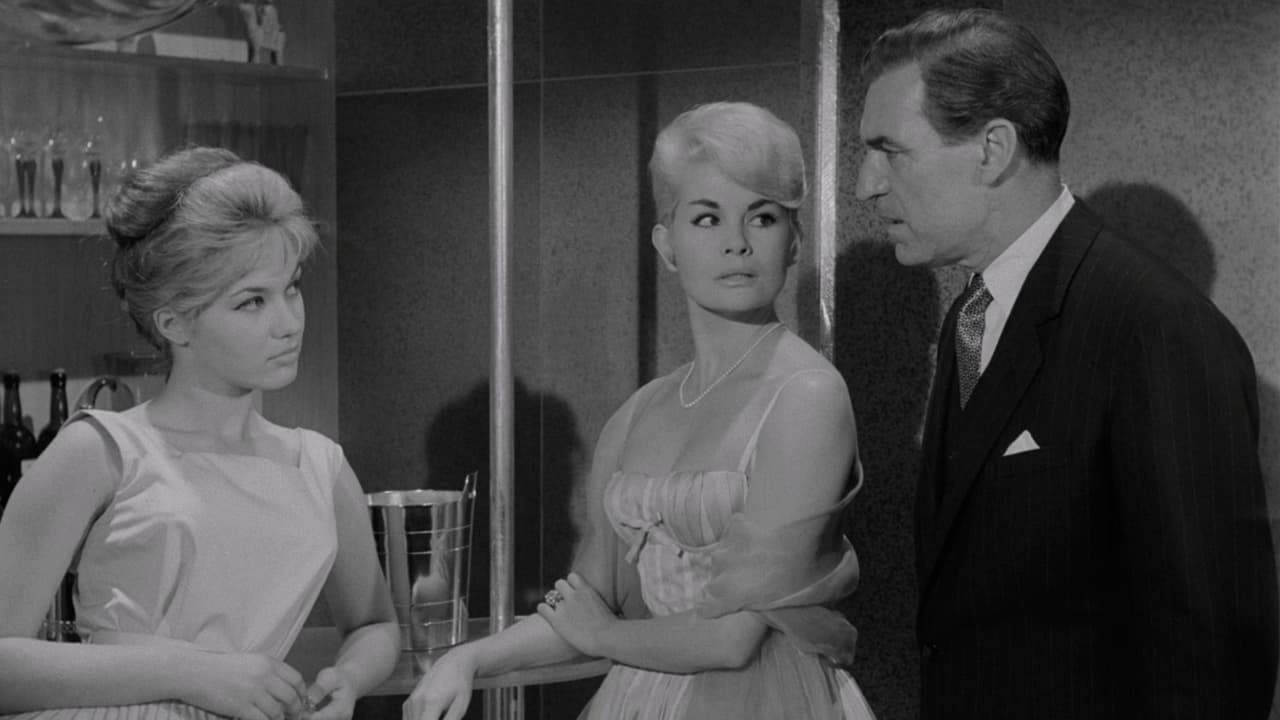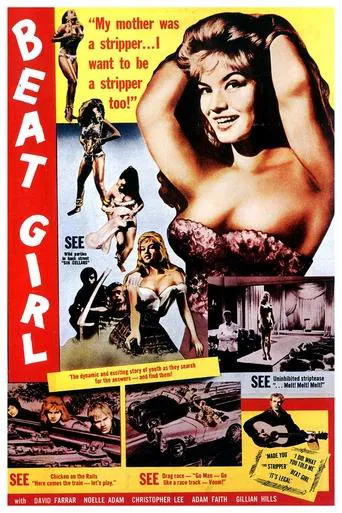

Crappy film
... View MoreAn action-packed slog
... View MoreThe movie is wonderful and true, an act of love in all its contradictions and complexity
... View More.Like the great film, it's made with a great deal of visible affection both in front of and behind the camera.
... View MoreBEAT GIRL is another film to explore the then-popular craze for Beatnik culture. Like THE PARTY'S OVER, it features Oliver Reed strutting his stuff in various dated dance scenes, and is interspersed with dialogue which sounds incredibly cheesy thanks to the way in which it has dated.Unlike THE PARTY'S OVER, it's an attempt to provoke censors and audiences with plenty of 'sensation' drama, as in the American quickies. One of the main characters is a former stripper and indeed striptease sequences play a big part in the proceedings; one particular exotic dancer, all the way from Hawaii, perhaps one of the most explicit teases I've ever seen despite the lack of nudity. It must have been incredible for audiences back in 1960.BEAT GIRL is actually a pretty decent little story. The youthful - and extremely attractive - Gillian Hills plays the girl who discovers her dad's new flame used to be a stripper, while at the same time she immerses herself in Beatnik culture. Most of the film is shot and set around a club in which Nigel Green and Christopher Lee play various sleazy characters. There's plenty of music here too, some of it courtesy of pop sensation Adam Faith, and despite the dating of the cultural material, it's never less than an engrossing - and surprisingly sexy - piece of film-making.
... View MoreThe music, is great. I actually have the music on my mp, but the story is your standard " rebel without a clue" story line. The actress pulls it off and makes it believable until the end, where her limitations show on the screen The heroine,is a confused young girl that hates her parents and is looking for a way to detach herself from the culture of their generation . She starts dreaming of escaping her life of comfort by planning to work as a stripper in the club across from coffee house she hangs out at. The fantasy of working in an atmosphere of stale beer, thick smoke and sweaty men who have a cornucopia of sexual proclivities is an uncontrollable sirens call to her soul. It is worth watching and the lead actress showed great promise but never really did much after this film. I did like the shooting locations and sets, the cinematography is above par, it has many attributes for a "B" Brit teen exploitation flick.
... View MoreWhat we've all been waiting for... Yes! It's another Christopher Lee strip-club!Hooray!Hurrah! But there's much more here. We have a (actually) 14 year-old Gillian Hills (later in Blow Up, when she'd reached the ripe age of 21), Jon Barry (and his Seven) doing the music and dreaming of James Bond, Adam Faith playing a beatnik-type-coffee bar-teenage-dreamboat... Everyone goes around saying "Daddio" and "Go, man, go" and "I'm real gone, man" and "Get out, you drivelling, jiving, beatnik scum" (honestly!), and not much happens... ..so they all go and play by having a drag race and then lying on a railway line and playing chicken...And Then!Someone called Laya Raki does an unbelievable striptease that will make your eyes water, (hers obviously did)...And Then!!Oliver Reed Starts Dancing!!...Sorry, I need to go and lie down for a bit...
... View MoreOnce upon a time, Channel 9 in New York featured the Million DollarMovie, which ran one movie all day long for a full day, a programming technique that has been copied by modern cable and satellite TV's in their endless repeats of movies and shows. But in the early 70's, before the invention of the VCR, Channel 9 was a film student's dream in that he or she could watch a movie over and over for one day and really study it. Beat Girl arrived on Channel 9, a few years after its run in British and, presumably, American theaters. I watched about eight hours of Beat Girl, in the generous, endless loop provided by Channel 9. This movie fascinated the 13-yr.-old me who had never encountered such rebellion and hostility on the part of a school-aged daughter towards her father, who has returned from a trip with a step mother for whom the daughter is unprepared.At 13, rebellious, unhappy, and edgy, I needed a "bad-girl" paradigm, and this movie supplied me with her. I loved the heroine and despised anyone who would stand in her way. She left such an impression on me that I have been fascinated by "bad girls" ever since.However, the film is so bad -- or good, depending on your point of view of gritty, early 60s "To Sir, With Love" England -- that you might want to stick around to see what happens to this sullen chick who's accompanied by some stoner boys to some bad jazz music. Or not: this is one low budget film with fairly terrible acting but there is a gritty earnestness to this film.Look for Oliver Reed, John McHenery, and Adam Faith in secondary roles. As in all of 50/60 flicks. look for a moral -- but look for the moments of rebellion, too. And dig that crazy music.
... View More